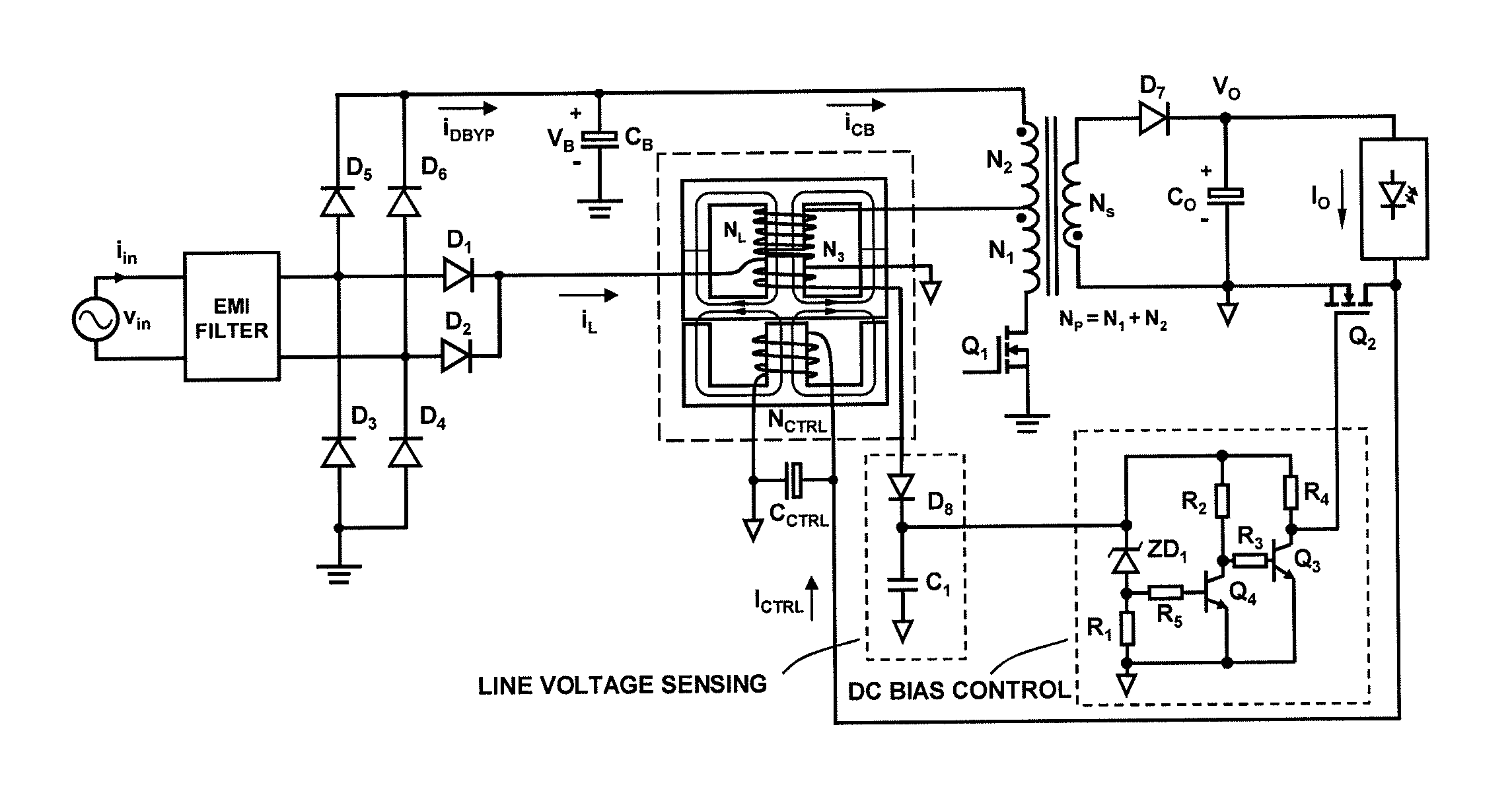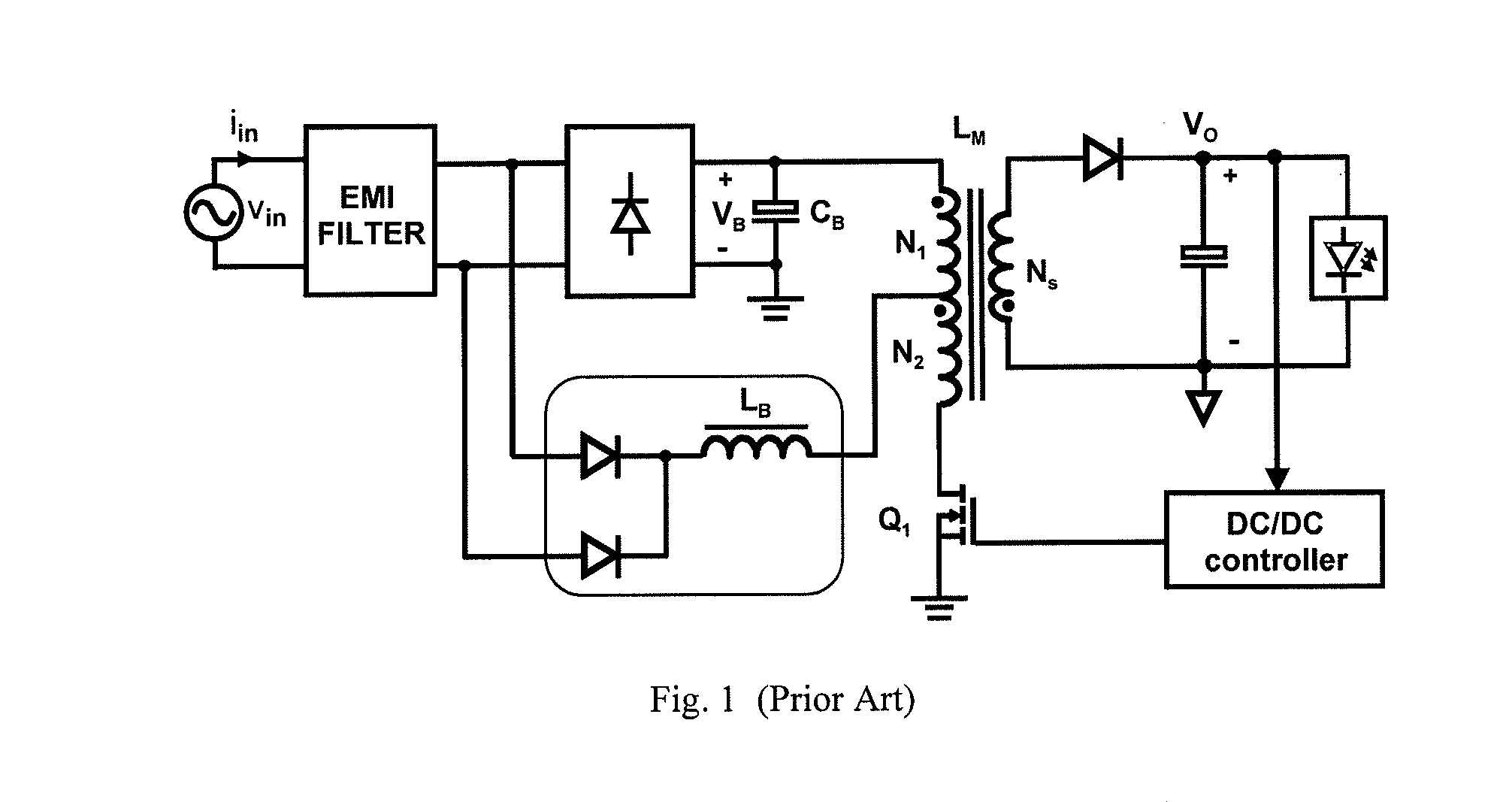Current-controlled variable inductor
- Summary
- Abstract
- Description
- Claims
- Application Information
AI Technical Summary
Benefits of technology
Problems solved by technology
Method used
Image
Examples
Embodiment Construction
[0051]The present invention is a current-controlled variable inductor comprising a magnetic structure and a control circuit. The magnetic structure includes one or more magnetic cores and two windings, also referred to as coils. The two coils are an inductor coil and a control coil. Each coil is associated with a separate magnetic flux such that the corresponding closed flux paths share one or more high-permeability common sections of the magnetic core
[0052]The inductance is varied by a control current. In an embodiment of the present invention, the control current is a dc bias current. When the current flows through the control winding, a control flux is added to the inductor magnetic flux in the shared high-permeability sections of the magnetic core. As a result, in the shared sections of the magnetic core, the effective permeability is reduced and, consequently, the inductance is decreased.
[0053]In an embodiment of the present invention, to ensure the proper magnetic flux paths, ...
PUM
 Login to View More
Login to View More Abstract
Description
Claims
Application Information
 Login to View More
Login to View More - R&D
- Intellectual Property
- Life Sciences
- Materials
- Tech Scout
- Unparalleled Data Quality
- Higher Quality Content
- 60% Fewer Hallucinations
Browse by: Latest US Patents, China's latest patents, Technical Efficacy Thesaurus, Application Domain, Technology Topic, Popular Technical Reports.
© 2025 PatSnap. All rights reserved.Legal|Privacy policy|Modern Slavery Act Transparency Statement|Sitemap|About US| Contact US: help@patsnap.com



